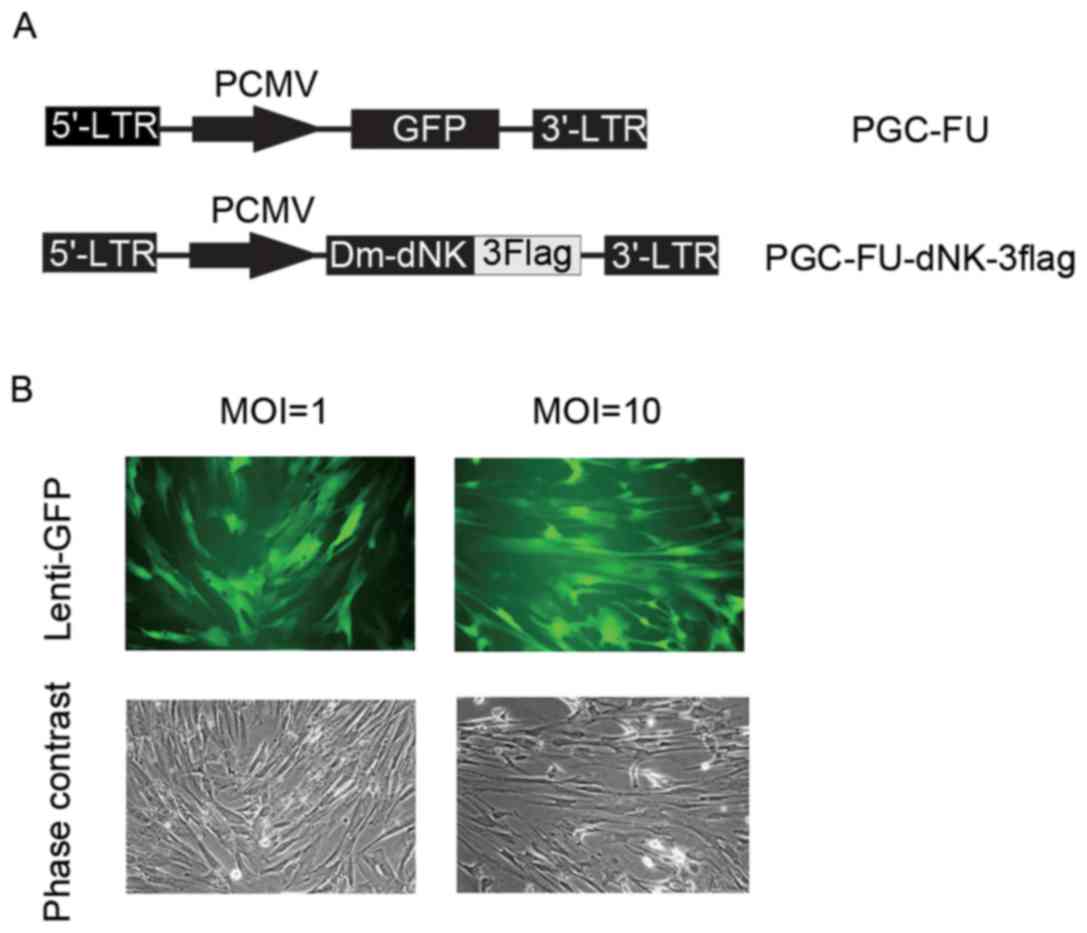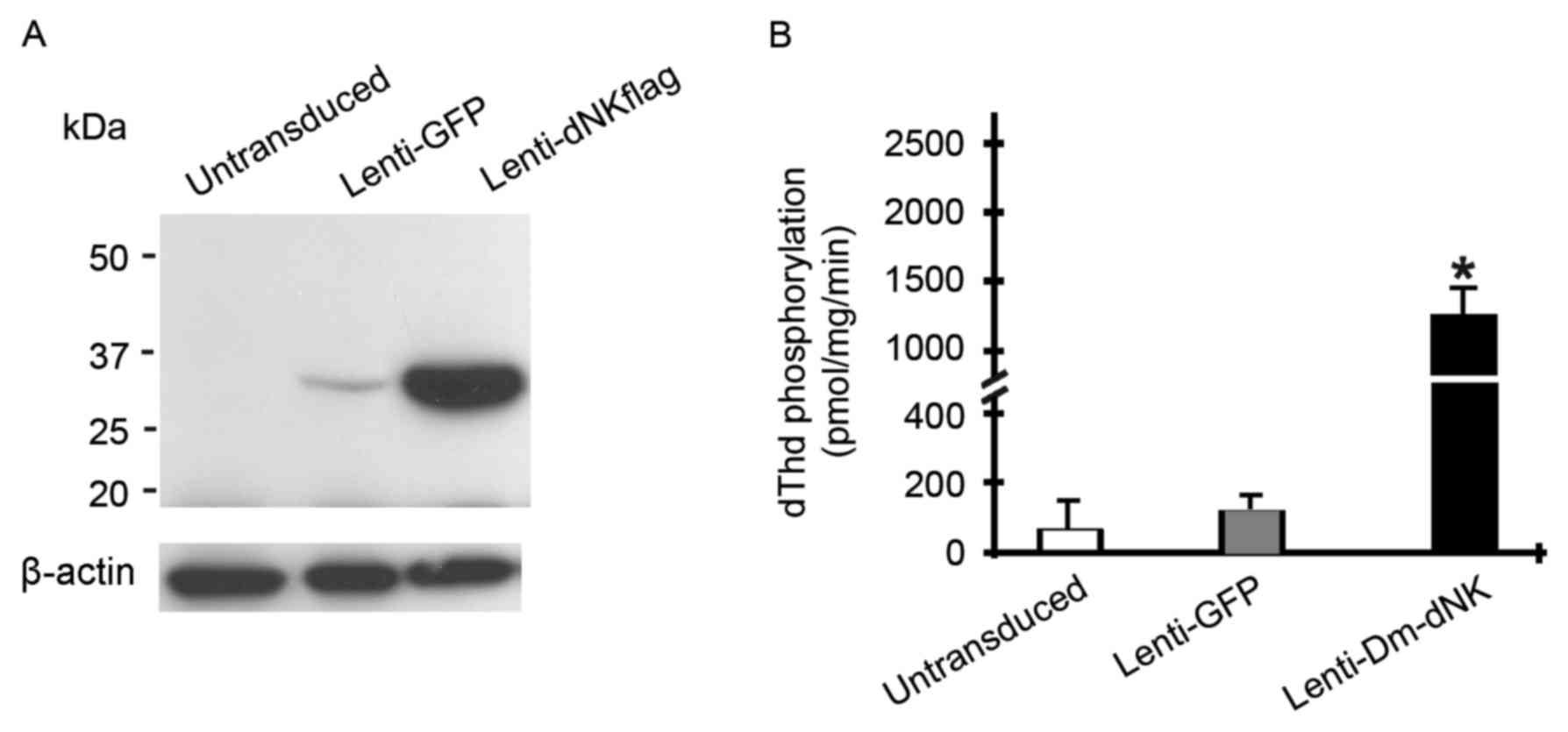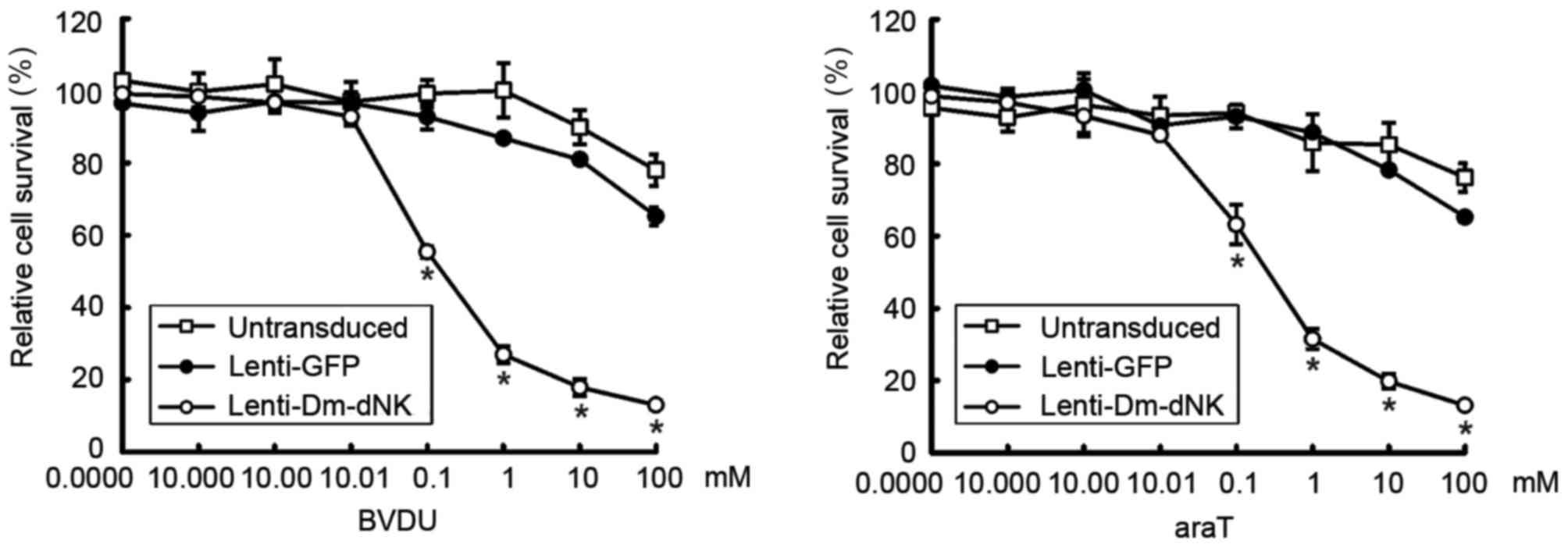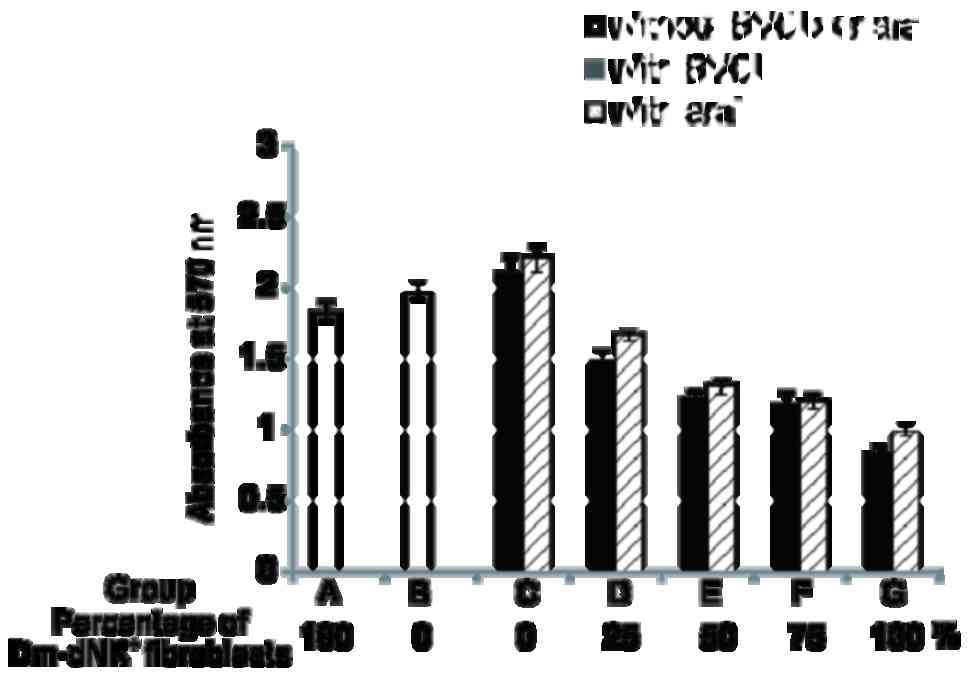|
1
|
Mogili NS, Krishnaswamy VR, Jayaraman M,
Rajaram R, Venkatraman A and Korrapati PS: Altered angiogenic
balance in keloids: A key to therapeutic intervention. Transl Res.
159:182–189. 2012. View Article : Google Scholar : PubMed/NCBI
|
|
2
|
Fan DL, Zhao WJ, Wang YX, Han SY and Guo
S: Oxymatrine inhibits collagen synthesis in keloid fibroblasts via
inhibition of transforming growth factor-β1/Smad signaling pathway.
Int J Dermatol. 51:463–472. 2012. View Article : Google Scholar : PubMed/NCBI
|
|
3
|
Arno AI, Amini-Nik S, Blit PH, Al-Shehab
M, Belo C, Herer E and Jeschke MG: Effect of human wharton's jelly
mesenchymal stem cell paracrine signaling on keloid fibroblasts.
Stem Cells Transl Med. 3:299–307. 2014. View Article : Google Scholar : PubMed/NCBI
|
|
4
|
Malekshah OM, Chen X, Nomani A, Sarkar S
and Hatefi A: Enzyme/prodrug systems for cancer gene therapy. Curr
Pharmacol Rep. 2:299–308. 2016. View Article : Google Scholar : PubMed/NCBI
|
|
5
|
Johansson M, van Rompay AR, Degrève B,
Balzarini J and Karlsson A: Cloning and characterization of the
multisubstrate deoxyribonucleoside kinase of Drosophila
melanogaster. J Biol Chem. 274:23814–23819. 1999. View Article : Google Scholar : PubMed/NCBI
|
|
6
|
Springer CJ and Niculescu-Duvaz I:
Prodrug-activating systems in suicide gene therapy. J Clin Invest.
105:1161–1167. 2000. View
Article : Google Scholar : PubMed/NCBI
|
|
7
|
Freeman SM, Abboud CN, Whartenby KA,
Packman CH, Koeplin DS, Moolten FL and Abraham GN: The ‘bystander
effect’: Tumor regression when a fraction of the tumor mass is
genetically modified. Cancer Res. 53:5274–5283. 1993.PubMed/NCBI
|
|
8
|
Munch-Petersen B, Knecht W, Lenz C,
Søndergaard L and Piskur J: Functional expression of a
multisubstrate deoxyribonucleoside kinase from Drosophila
melanogaster and its C-terminal deletion mutants. J Biol Chem.
275:6673–6679. 2000. View Article : Google Scholar : PubMed/NCBI
|
|
9
|
Munch-Petersen B, Piskur J and Sondergaard
L: Four deoxynucleoside kinase activities from Drosophila
melanogaster are contained within a single monomeric enzyme, a
new multifunctional deoxynucleoside kinase. J Biol Chem.
273:3926–3931. 1998. View Article : Google Scholar : PubMed/NCBI
|
|
10
|
Zheng X, Johansson M and Karlsson A:
Retroviral transduction of cancer cell lines with the gene encoding
Drosophila melanogaster multisubstrate deoxyribonucleoside
kinase. J Biol Chem. 275:39125–39129. 2000. View Article : Google Scholar : PubMed/NCBI
|
|
11
|
Zhang N, Zhao L, Ma S, Gu M and Zheng X:
Lentivirus-mediated expression of Drosophila melanogaster
deoxyribonucleoside kinase driven by the hTERT promoter combined
with gemcitabine: A potential strategy for cancer therapy. Int J
Mol Med. 30:659–665. 2012. View Article : Google Scholar : PubMed/NCBI
|
|
12
|
Zhang N, Dong X, Sun Y, Cai X, Zheng C, He
A, Xu K and Zheng X: Cytotoxic effects of adenovirus- and
lentivirus-mediated expression of Drosophila melanogaster
deoxyribonucleoside kinase on Bcap37 breast cancer cells. Oncol
Rep. 29:960–966. 2013. View Article : Google Scholar : PubMed/NCBI
|
|
13
|
Ma S, Qu W, Mao L, Zhu Z, Jia L, Zhao L
and Zheng X: Antitumor effects of oncolytic adenovirus armed with
Drosophila melanogaster deoxyribonucleoside kinase in
colorectal cancer. Oncol Rep. 27:1443–1450. 2012.PubMed/NCBI
|
|
14
|
Sandrini MP, Clausen AR, On SL, Aarestrup
FM, Munch-Petersen B and Piskur J: Nucleoside analogues are
activated by bacterial deoxyribonucleoside kinases in a
species-specific manner. J Antimicrob Chemother. 60:510–520. 2007.
View Article : Google Scholar : PubMed/NCBI
|
|
15
|
Zheng X, Johansson M and Karlsson A:
Bystander effects of cancer cell lines transduced with the
multisubstrate deoxyribonucleoside kinase of Drosophila
melanogaster and synergistic enhancement by hydroxyurea. Mol
Pharmacol. 60:262–266. 2001. View Article : Google Scholar : PubMed/NCBI
|
|
16
|
Qiao J, Black ME and Caruso M: Enhanced
ganciclovir killing and bystander effect of human tumor cells
transduced with a retroviral vector carrying a herpes simplex virus
thymidine kinase gene mutant. Hum Gene Ther. 11:1569–1576. 2000.
View Article : Google Scholar : PubMed/NCBI
|
|
17
|
Beltinger C, Uckert W and Debatin KM:
Suicide gene therapy for pediatric tumors. J Mol Med (Berl).
78:598–612. 2001. View Article : Google Scholar : PubMed/NCBI
|
|
18
|
Hackman T, Doubrovin M, Balatoni J,
Beresten T, Ponomarev V, Beattie B, Finn R, Bornmann W, Blasberg R
and Tjuvajev JG: Imaging expression of cytosine deaminase-herpes
virus thymidine kinase fusion gene (CD/TK) expression with
[124I]FIAU and PET. Mol Imaging. 1:36–42. 2002. View Article : Google Scholar : PubMed/NCBI
|
|
19
|
Xu B, Liu ZZ, Zhu GY, Yang JF, Zhao JP,
Wang JC and Cai JL: Efficacy of recombinant adenovirus-mediated
double suicide gene therapy in human keloid fibroblasts. Clin Exp
Dermatol. 33:322–328. 2008. View Article : Google Scholar : PubMed/NCBI
|
|
20
|
Ma S, Zhao L, Zhu Z, Liu Q, Xu H,
Johansson M, Karlsson A and Zheng X: The multisubstrate
deoxyribonucleoside kinase of Drosophila melanogaster as a
therapeutic suicide gene of breast cancer cells. J Gene Med.
13:305–311. 2011. View
Article : Google Scholar : PubMed/NCBI
|
|
21
|
Zhu Z, Zhao L, He A, Huang B, Karlsson A,
Xu H and Zheng X: Retrovirus-mediated Drosophila
melanogaster multisubstrate deoxyribonucleoside kinase gene
therapy of gastric cancer cells in vitro and in vivo. Anticancer
Res. 30:2641–2649. 2010.PubMed/NCBI
|
|
22
|
Zhu Z, Mao L, Zhao L, Sun Z, Wang Z, Xu H
and Zheng X: Synergistic therapeutic effect in gastric cancer cells
produced by oncolytic adenovirus encoding Drosophila
melanogaster deoxyribonucleoside kinase. Cancer Biol Ther.
11:874–882. 2011. View Article : Google Scholar : PubMed/NCBI
|
|
23
|
Aghi M, Hochberg F and Breakefield XO:
Prodrug activation enzymes in cancer gene therapy. J Gene Med.
2:148–164. 2000. View Article : Google Scholar : PubMed/NCBI
|
|
24
|
Bi WL, Parysek LM, Warnick R and Stambrook
PJ: In vitro evidence that metabolic cooperation is responsible for
the bystander effect observed with HSV tk retroviral gene therapy.
Hum Gene Ther. 4:725–731. 1993. View Article : Google Scholar : PubMed/NCBI
|
|
25
|
Seachrist L: Successful gene therapy has
researchers looking for the bystander effect. J Natl Cancer Inst.
86:82–83. 1994. View Article : Google Scholar : PubMed/NCBI
|
|
26
|
Fick J, Barker FG II, Dazin P, Westphale
EM, Beyer EC and Israel MA: The extent of heterocellular
communication mediated by gap junctions is predictive of bystander
tumor cytotoxicity in vitro. Proc Natl Acad Sci USA.
92:11071–11075. 1995. View Article : Google Scholar : PubMed/NCBI
|
|
27
|
Arno AI, Gauglitz GG, Barret JP and
Jeschke MG: New molecular medicine-based scar management
strategies. Burns. 40:539–551. 2014. View Article : Google Scholar : PubMed/NCBI
|


















